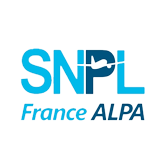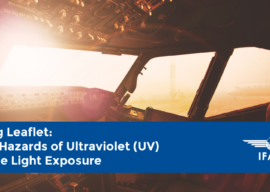
IFALPA Briefing Leaflet: Runway Misalignment During Approach
Following a number of safety occurrences involving flight crews attempting approaches and landings on surfaces different from those for which they received landing clearance (wrong runways, taxiways, and even wrong airports), this BL raises awareness on the contributing factors, and offers a set of safety recommendations to mitigate this risk.
IFALPA Briefing Leaflet: Yellow Fever Information for Pilots
IFALPA has updated information for Pilots on Yellow Fever. Please review carefully and, as always, be aware of the regulations and expectations of your operator/employer, and those of your local health authority.
IFALPA Briefing Leaflet: Enhancing Pilot Monitoring
IFALPA recognizes the critical roles of Pilot Flying (PF) and Pilot Monitoring (PM) as foundational elements in flight deck operations. While the aviation industry has established clear definitions and responsibilities for these specific roles, IFALPA advocates for a renewed focus on the monitoring tasks associated with both the pilot flying and monitoring positions during all phases of flight. This leaflet aims to highlight the pilot monitoring tasks, supporting flight safety and operational efficiency, and introduce tools for enhancing its effectiveness in the cockpit. This briefing also introduces a theoretical background on human perception, cognition, and a model of situational awareness for pilot monitoring tasks. It then describes five tools designed to enhance monitoring effectiveness and their real-world applications. The reader is invited either to review the complete document or to review the tools individually, with references to the theoretical background where necessary.
IFALPA Briefing Leaflet: Ocular Hazards of UV and Blue Light Exposure
The range of wavelengths of visible light is from approximately 400 nanometres (nm) to 700nm. The wavelength of UV radiation is below that of visible light, ranging from 100nm to 400 nm. Since UV radiation has more energy than visible light, it may cause damage to the ocular lens of the eye causing cataracts. Blue light may play a role in the pathophysiology of macular degeneration depending on exposure intensity and time (...)
Briefing Leaflet: Ocular Hazards of UV and Blue Light Exposure
6 May 2024 - The range of wavelengths of visible light is from approximately 400 nanometres (nm) to 700nm. The wavelength of UV radiation is below that of visible light, ranging from 100nm to 400 nm. Since UV radiation has more energy than visible light, it may cause damage to the ocular lens of the eye causing cataracts. Blue light may play a role in the pathophysiology of macular degeneration depending on exposure intensity and time (...)
IFALPA Briefing Leaflet: Detrimental Effects of Identifying Crew Members in Accident Reports
The goal of every accident investigation is to discover the contributing factors of the occurrence. Crew members involved in an accident or incident are often willing participants in the investigation, knowing that they are contributing to aviation safety by providing the information required to prevent a reoccurrence (...)
IFALPA Briefing Leaflet: Controlled Rest on the Flight Deck
This paper is an update to, and supersedes, 21HUPBL01, of the same name. Controlled rest is not permitted by some regulators and operators. The purpose of this briefing leaflet is to advise Member Associations of the guidance material available concerning procedures for Controlled Rest (CR) on the flight deck. It also gives information on the prerequisites when CR may be used.
IFALPA Briefing Leaflet: Effects of Manipulated GNSS Signals on Aircraft and Mitigation Measures
Recent reports show that various civil aircraft have been subject to altered GNSS signals in Azerbaijan, Iran, Iraq, and Turkey. Manipulated GNSS signals can compromise aircraft navigation systems, potentially leading to complete navigation loss, with severe safety implications (...)
IFALPA Briefing Leaflet: Mental Health
IFALPA recognises the need to protect, promote, and support the mental and physical health and wellbeing of pilots. This Briefing Leaflet focuses on mental health, encouraging each stakeholder to exercise their duty of care (responsibility) for the mental health of pilots. Globally, the Covid-19 pandemic has led to greater concern for mental health, which was already in focus in the aviation world following German Wings 4U9525 in 2015. The pandemic triggered stress, anxiety, depression, and, for some, activated unhealthy coping mechanisms.
IFALPA Briefing Leaflet: Sample Guidelines for Member Associations in the Event of a Pilot Being Arrested in a Foreign Country
While a pilot may assume it could never happen to them, arrest by the police of a foreign State is always a possibility. It is important to be prepared and aware of what actions can be taken and how to instruct your members beforehand on how to react in these circumstances (i.e. instructions card). This Briefing Leaflet provides guidelines for both the Member Association and the individual pilot on how to deal with a pilot arrest.

